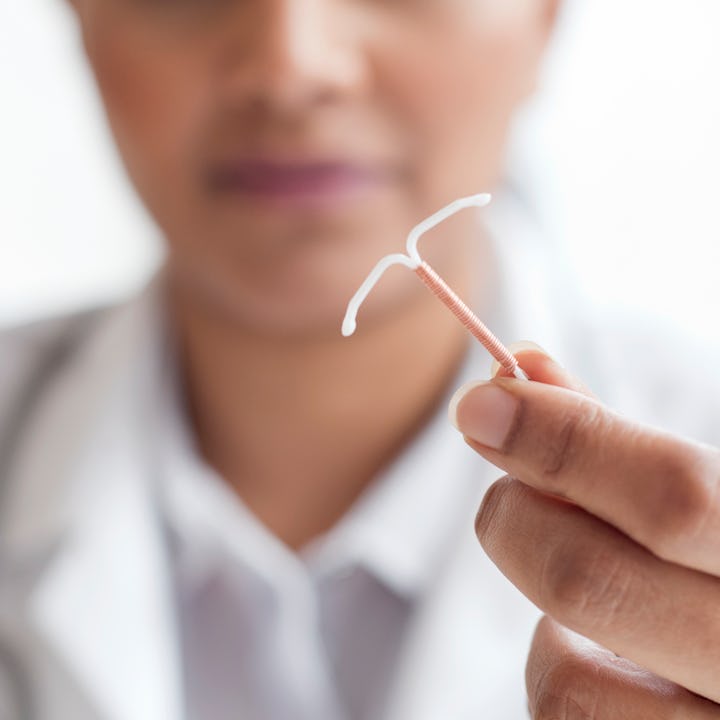CDC Finally Says IUD Insertion Pain Needs To Be Addressed & Yes, Duh
For the first time in eight years, the agency is changing its approach to this increasingly popular procedure.

It’s always good to be prepared and no one knows this better than moms — it’s why our purses are always loaded up like Mary Poppins’ carpetbag just in case someone needs hand sanitizer or a snack or a hair tie. But for those of us who don’t want to be moms (or don’t want to become a mom again) and opt for long-acting, reversible birth control like an intrauterine device (IUD), we’re not prepared for the pain that often accompanies the procedure because, well, it turns out doctors have been underestimating how much it hurts. By a lot.
But now — finally — the Centers for Disease Control and Prevention (CDC) is officially urging health care providers to do better by patients. It’s about time.
IUDs — including Paragard, Mirena, Kyleena, Liletta, Skyla — are flexible, T-shaped devices that are inserted into the uterus through the vagina to prevent pregnancy and use either hormones or copper to repel sperm. There are many benefits to this method of birth control: IUDs last for years but are not permanent, so if you change your mind about wanting to start a family, it can be quickly removed. They’re an excellent option for those with no immediate plans to get pregnant but who want to keep their options open later on.
Boasting a 99% efficacy rate, it’s perhaps no wonder that since the reversal of Roe v. Wade in 2022, Planned Parenthood has reported a 400% increase in appointments to get an IUD.
But casually saying something is “inserted into the vagina through the uterus” is sort of skimming over the idea that there’s a foreign object being shoved into your uterus through both your vagina and your cervix. And perhaps due to the increased prevalence of the procedure in recent years, particularly among younger people (those who’ve already given birth generally report less pain than those who haven’t), we’ve been hearing more and more about the pain, often understated by doctors, that patients are just expected to endure with over-the-counter medication. Some have even filmed their procedures and shared the videos on TikTok and other social media platforms, prompting sympathetic conversation and encouraging others to share their experiences.
New guidelines to better manage patient pain replaces previous recommendations from 2016 and advises doctors that “all patients should be counseled on potential pain during placement as well as the risks, benefits and alternatives of different options for pain management,” calling for a “person-centered” plan for pain management based on patient preference. While no one medication is recommended, the CDC suggests misoprostol, which works to soften and dilate the cervix, and lidocaine, a numbing agent, as potentially good options.
On X (formerly Twitter), Dr. Emily Porter shared these updates, but cautioned providers not to rely on misoprostol as an option. “Pharmacists have refused to fill it in conservative states with abortion bans,” she noted and, indeed, the drug which can also be used for abortion procedures, has been denied, despite a prescription, in some places.
Still, some are pleased that this issue has received long-awaited acknowledgement at the federal level, while others can’t understand why this was ever an issue to overcome in the first place.
“I have had four major surgeries and a half dozen or so other significant medical procedures, NOTHING has come close to the pain of IUD insertion,” tweeted @devo_cook. “I literally blacked out from the pain. I can’t believe it’s taken this long for doctors to start taking it seriously.”